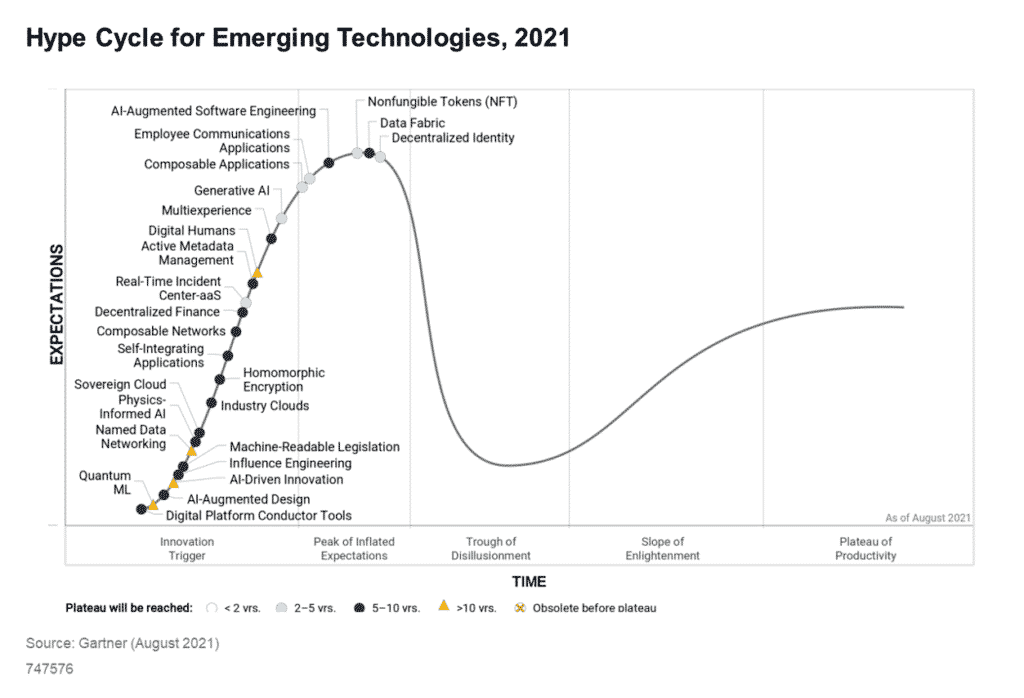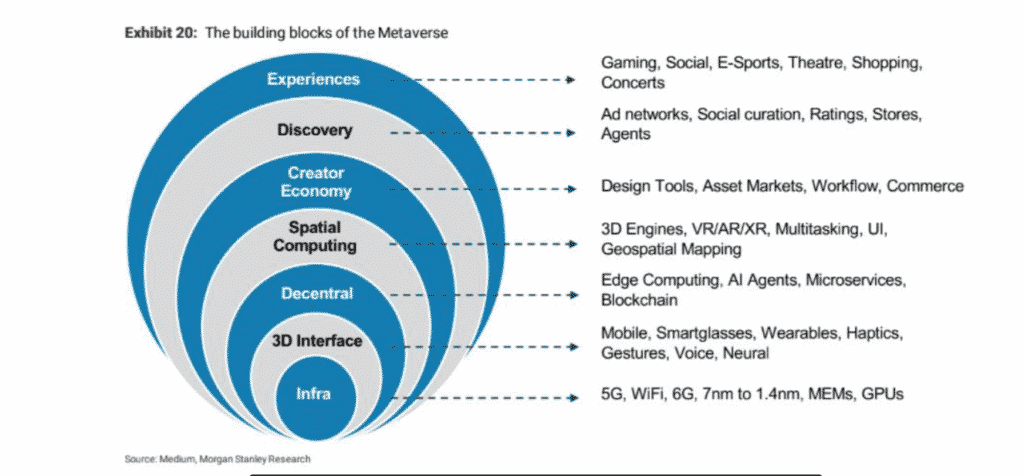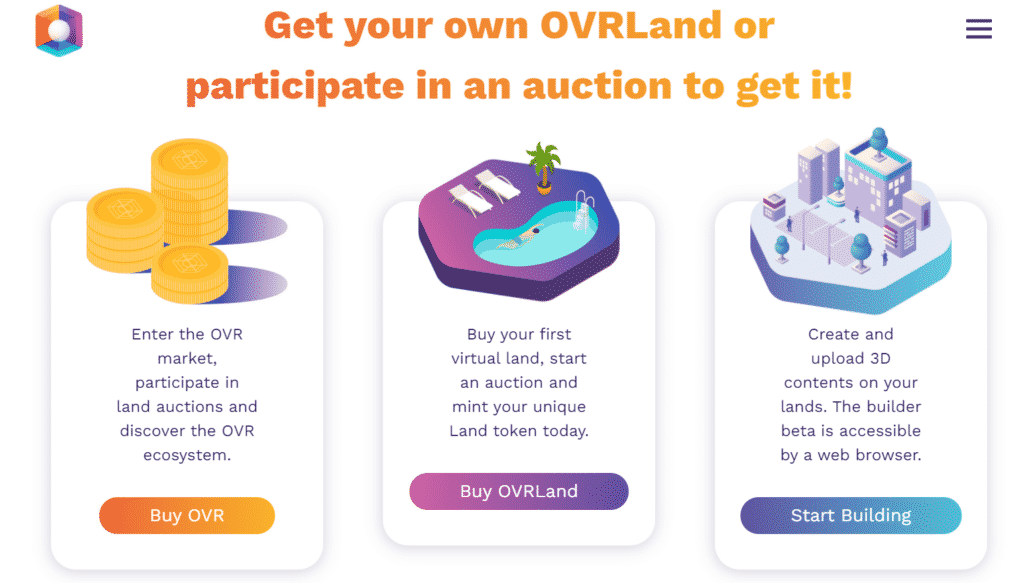OVR: How AR will boost the metaverse
For years, some thought augmented reality was dead. It didn’t appeal to audiences big enough to become an important part of how we spend our time online. But now the state of play for AR is different. With the arrival of the Metaverse, AR is on its way to regaining its former glory and is about to become a vital part of our digital lives.

Today’s mobile AR ecosystem is laying the groundwork for entirely new ways of interacting with the world, be it reimagining the way we shop, fuelling the growth of the design market, or simply bringing us closer to the Metaverse. But besides serving the visions of web giants like Facebook and Twitter, and the creation of completely augmented universes like Pokémon GO, what can AR bring to the metaverse? Is it always going to be an entirely separate virtual realm, or could we at some point see the real world blend seamlessly into the metaverse? In this article, we go through the core principles of AR in the metaverse and also use the opportunity to introduce you to OVR, a pioneer in the field.
Note: This article is brought to you by the OVR team. Cryptocurrency
investments carry an inherent risk. Do your own research and never invest more than you can afford
to lose. This article does not constitute an incentive to invest.
A look back at the history of augmented reality
In a 2016 New Yorker article, tech writer Om Malik said: “Augmented reality is the “boy who cried wolf” of the post-Internet world — it’s long been promised but has rarely been delivered in a satisfying way.” He then explored the possible implications of Niantic Labs’ Pokémon Go, which had just been released in July 2016. Malik, of course, couldn’t have predicted that AR gaming would eventually become lightning in a bottle, bringing together more than 232 million users.
Facebook (Meta) may be planning to create a full-blown immersive digital “matrix” known as the MetaVerse; however, Niantic CEO John Hanke tells us that the real aim here is to take reality as it is and enhance it.
Half a decade later, Pokémon Go seems like a long-forgotten dream, which some say would confirm Malik’s initial assessment since he viewed AR as overrated and ultimately unsatisfying. Today’s numbers, however, tell a different story. The global AR market is expected to reach a market cap of over $340 billion (~£257 billion) by 2028, with a compound annual growth rate of 43.8% between now and 2028.

Mobile AR has already become an important part of our daily lives. Take Snapchat and Instagram camera filters for example, then add apps that offer a digitalised view of real-world infrastructure and geographies, from Google Maps to Uber.
Even though AR has already sneaked its way into our daily routines, many experts argue that today’s technological, sociological and economic landscape offers more room for innovation in mobile AR than ever before. This is escalated by the momentous arrival of the metaverse, the new frontier between the real and the virtual, which is defining the borders of Web3, the next-generation Internet, right as we speak.
But before digging any deeper, you need to ask yourself: do you really know the difference between AR (augmented reality) and VR (virtual reality)? It’s a fundamental question at the heart of any debate over any vision of the world of tomorrow. However, the components of what’s called Immersive Tech, AR and VR, have some differences. These involve either immersing the user in a completely virtual environment (VR) or making virtual elements appear on top of the user’s real surroundings (AR).

Source: Marc Zuckerberg avatar
For example, Facebook (now Meta) is designing a haptic glove that will allow you to touch virtual objects in the metaverse experience.
Metaverse, a new frontier between the real and the digital
The more tech- and corporate giants invest in the new universe, the more we realise the philosophical debate unfolding before our eyes between believers in AR and VR. As Meta develops a virtual reality, Niantic Labs believes in AR as the future of the Metaverse. The creator of Pokémon Go has even released an AR mobile app dev kit.

© Niantic Labs
An increasing number of experts also believe that we are finally getting closer to a metaverse where the physical and the digital merge together. It’s also known that the metaverse market is expected to reach around $800 billion (~£604 billion) by 2024. “The real transformation will occur when the optical issues of AR headsets are fixed and the notion of permanent digital overlay of the real world will become a reality,” says Alex Nelson, UX manager for future experiments at the BBC’s research and development arm.
The problem here is to know who will belong to the metaverse of augmented reality. It may sound like science fiction, but the ability to show content specific to the location and context of the user is very appealing, both to the audience and to those who are striving to become big players in the AR game. Civilisation AR, for example, is an immersive mobile app launched in 2018 that allows users to explore historical exhibits and famous artefacts up close and even interact with them.
The merging of the physical and digital worlds is a change that could revolutionise marketing and commerce to an unparalleled degree. We are at the dawn of Web3, where all technologies will come to life: 3D, AR, VR, AI, and the blockchain. Marketing and branding are at the forefront of this paradigm shift, and this is what we recently observed with the explosion in the number of partnerships between metaverse or NFT platforms, or even games and big brands: Fortnite X Balenciaga, Louis The Game, Nike X Roblox, Adidas X TheSandbox, Coca-Cola X Decentraland, Kinahan’s in the Metaverse, Gucci X Roblox etc.

Source: Morgan Stanley Research
Augmented reality and Metaverse are both technologies that aim to present content in the most natural way possible, seamlessly incorporating images, sounds, and even sensory input into our perceived surroundings. This means that AR, more than any other form of media to date, has the potential to alter our sense of reality, transforming the way we perceive our daily experiences. In an augmented world, the mere act of walking the streets will be a wild amalgamation of the physical and the virtual, fused so vividly that the boundaries in our minds will be completely eliminated. The environments around us will be filled with people, places, objects and activities that don’t exist in the real world but will nonetheless appear to be entirely authentic.
“That’s what we mean by “the real metaverse”—the common substrate for all of these transformations. Many of those would be for entertainment—giant robots, Pac-Man, Pokémon. But it could be purely utilitarian. It could be oriented toward shopping or any number of practical applications. What’s different from the VR metaverse is that with ours you have this common structure that is the real world. The bits get tied to the atoms. And so you have these things that add information to the place that you’re in or give you useful functionality. It could put a virtual button hanging in the air that lets you buy a bus ticket or check in for your flight, or arrows painted on the sidewalk that lead you to the subway, or information about the product that you’re looking at, telling you whether it was ethically sourced. That’s the potential that matters. AR is the place where the real metaverse is going to happen,” John Hanke, CEO of Niantic.

Source: Pokémon GO
Following this vision and chasing the incredible potential of the metaverse and AR, Niantic Labs is raising $300 million (~£226 million) to further the vision of a “real-world metaverse”, not just a parallel or virtual world like what Facebook is trying to push.
OVR, the first AR app to take you into the metaverse

As its name suggests, OVR (Over the Reality) is an augmented reality platform present across the globe. OVR is open-source and is based on the Ethereum blockchain. It allows users to glimpse a new world and connect with the hottest tech of today, including blockchain and its NFT, tokens, and cryptocurrencies. But OVR’s ambition doesn’t end there. It ultimately aims to become the decentralised AR metaverse platform and the “home” of NFTs.

The company is constantly developing and has recently launched OVR Land Map, the first-ever NFT-based detailed 3D map of the real world. This opens up a vast range of opportunities for creating AR experiences. Beyond OVR Land, OVR is developing a host of universes capable of creating the Web 3.0 of tomorrow.
If Axie Infinity has revealed the potential of play-to-earn, then it can be said that OVR is competing for leadership in the map-to-earn arena by allowing users to earn rewards by simply scanning physical locations.
These are truly spectacular times we’re living in, and we can already see that the AR revolution is round the corner. At this point, it’s safe to say that augmented reality will play a key role in how the digital future plays out, and so will VR, of course. We can only hold our breath and watch the future unfold.
Maximize your Cointribune experience with our "Read to Earn" program! For every article you read, earn points and access exclusive rewards. Sign up now and start earning benefits.
Derrière la signature générique « Rédaction CT » se trouvent de jeunes journalistes et des auteurs aux profils particuliers qui souhaitent garder l’anonymat car impliqués dans l’écosystème avec certaines obligations.
The views, thoughts, and opinions expressed in this article belong solely to the author, and should not be taken as investment advice. Do your own research before taking any investment decisions.